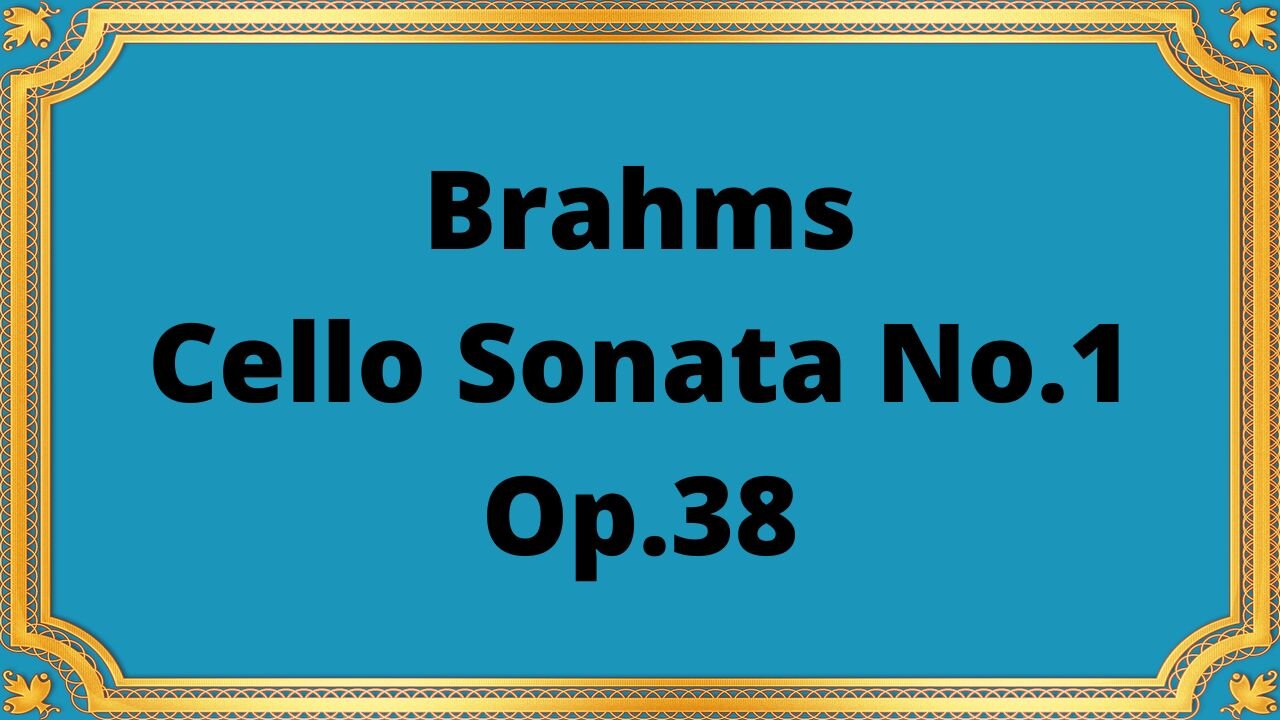Premium Only Content

Brahms Cello Sonata No.1, Op.38
#Brahms #cello_sonata#classical_music
Johannes Brahms' Cello Sonata No. 1, Op. 38, is a cornerstone of the cello repertoire and a beloved work of the Romantic era. Composed in 1862-65, it was dedicated to Josef Gänsbacher, a close friend and supporter of the composer.
The sonata is written in three movements, each showcasing Brahms' trademark lyricism and emotional depth. The first movement, Allegro non troppo, opens with an expansive and richly harmonized melody in the cello, which is then developed and elaborated upon by both the cello and piano. The second movement, Allegretto quasi menuetto, is a dance-like interlude, featuring a graceful and elegant melody in the cello, with the piano providing a delicate accompaniment. The final movement, Allegro, is a tour-de-force of virtuosity and passion, with the cello and piano engaging in a dazzling and intricate dialogue.
The sonata is notable for its skillful use of counterpoint and texture, as well as its emotional depth and sensitivity. Brahms displays an exceptional command of the cello's range and tone, allowing it to soar and sing with expressive power throughout the work. The sonata is also marked by its dynamic rhythmic and harmonic contrasts, creating a sense of tension and release that keeps the listener engaged throughout.
In addition to its musical merits, the Cello Sonata No. 1 is widely recognized for its historical significance, representing a landmark in the development of the cello repertoire. Brahms drew inspiration from the works of Bach and Beethoven, crafting a work that is both deeply rooted in tradition and innovatively modern.
The sonata has been widely performed and recorded, with countless interpretations by some of the world's greatest cellists and pianists. It remains a beloved work in the classical canon, a testament to Brahms' genius and the enduring power of Romanticism in music.
In conclusion, Johannes Brahms' Cello Sonata No. 1, Op.38 is a masterpiece of the Romantic era and a cornerstone of the cello repertoire. Its lyrical beauty, emotional depth, and technical mastery make it a beloved work of both performers and audiences, and its historic significance cements its place as a timeless classic of classical music.
You have the opportunity to support the channel https://destream.net/live/RadSiarAl/donate
-
 22:54
22:54
Classical music_Music Inspiration
6 days agoLudwig van Beethoven Quartet No. 6 in B-flat major, Op. 18 No. 6
252 -
 LIVE
LIVE
Futures Edge: Finance Unfiltered with Jim Iuorio and Bob Iaccino
59 minutes agoLIVE Technical Analysis with Mike Arnold
201 watching -
 3:47:18
3:47:18
Right Side Broadcasting Network
7 hours agoLIVE REPLAY: President Trump Makes an Announcement - 9/2/25
159K61 -

The Quartering
2 hours agoAlex Jones Goes To WAR With Owen Shroyer, Are All Women Terrible?, Woke Backfire Of The Year!
70.3K19 -

The White House
6 hours agoPresident Trump Makes an Announcement, Sep. 2, 2025
8.86K11 -
 2:15:05
2:15:05
MattMorseTV
2 hours ago $9.90 earned🔴Trump's Oval Office BOMBSHELL.🔴
15.3K15 -
 18:14
18:14
Real Estate
15 hours ago $0.38 earnedRising Prices PUSHING AMERICANS OVER THE EDGE
6.39K1 -
 1:43:35
1:43:35
Russell Brand
3 hours agoTrump Demands Big Pharma PROVE Covid Vaccine Is Safe – Did Pfizer LIE?! - SF626
131K25 -
 LIVE
LIVE
Due Dissidence
4 hours agoIsrael THREATENS Greta, InfoWars Host QUITS, FL Losing $200M on EMPTYING Alligator Alcatraz
919 watching -
 6:09:56
6:09:56
Law&Crime
7 hours ago $0.84 earnedLIVE: Adelson Matriarch Murder Trial — FL v. Donna Adelson — Day 6
12.8K